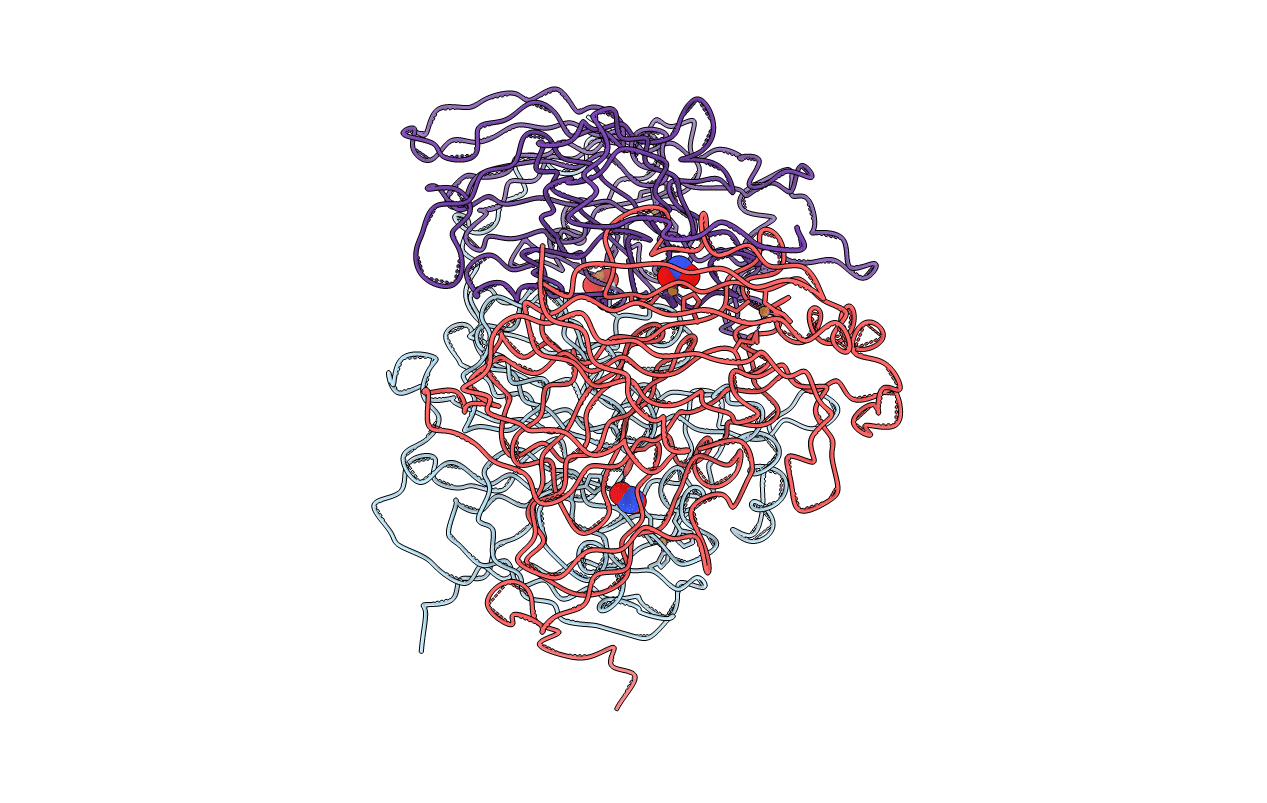
Deposition Date
1997-01-23
Release Date
1997-07-07
Last Version Date
2024-05-22
Entry Detail
PDB ID:
1NDS
Keywords:
Title:
CRYSTALLOGRAPHIC STRUCTURE OF A SUBSTRATE BOUND BLUE COPPER NITRITE REDUCTASE FROM ALCALIGENES XYLOSOXIDANS
Biological Source:
Source Organism:
Achromobacter xylosoxidans (Taxon ID: 85698)
Method Details:
Experimental Method:
Resolution:
2.80 Å
R-Value Free:
0.28
R-Value Work:
0.23
R-Value Observed:
0.23
Space Group:
P 21 21 21


